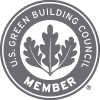U.S. Green Building Retrofit Market to Hit $15B by 2014
By Justin Moresco, Oct. 23, 2009
Just days after the White House outlined its strategy for bolstering the home energy retrofit market, a new report from research and publishing firm McGraw-Hill Construction predicts the market for nonresidential green building retrofits is set to soar and represents a better opportunity for designers and builders than new construction. The market for such retrofit projects, which include activities like installing energy-saving lighting, mechanical and electrical systems, will grow to $10.1 billion-$15.1 billion by 2014 from just $2.1 billion-$3.7 billion this year, according to the report. Put another way, green buildings will comprise a 20-30 percent share of the U.S. retrofit and renovation market in five years, up from its 5-9 percent stake today.

The rising interest in green retrofits represents a “tremendous market opportunity for green builders, owners and building product manufacturers,” according to the report, which considered projects that would be over $1 million in total costs. The study concludes that the greatest opportunity for green design and construction activity lies not in constructing new green buildings, but in engaging in the retrofit and renovation of existing ones.
A project is considered “green” in this report if it employs multiple practices, products and processes covering a minimum of three out of five aspects of green building – energy, water or resource efficiency, improved indoor environmental quality and responsible site management. The sectors with the largest green retrofit opportunity are education and office, representing about 50 percent of all retrofit activity, with the biggest growth expected in retail.
So what exactly are building owners asking for in these green retrofits? As part of the study, researchers surveyed owners across the country who had completed retrofit projects. One hundred percent of the respondents said they installed energy-efficient lighting and/or made more use of natural daylight in their retrofits.
That activity was followed by: installing more energy-efficient mechanical and electrical systems (92 percent); improving occupancy comfort inside the building, such as with the use of smart ventilation systems or individual thermal comfort controls (79 percent); installing water-efficient plumbing like low-flush toilets (71 percent); adding more environmentally friendly finishes and furnishings (66 percent); and upgrading the building envelope, such as by installing high-performance windows and insulation (61 percent). About two-thirds of building owners said they expected the savings achieved from energy efficiency improvements to pay for the cost of the investment within 10 years (11 percent thought payback would take longer).
Financial benefits are the primary driver for encouraging owners and tenants to pursue green retrofits, the study found, but tenant satisfaction is close behind, especially in the current economic downturn. While energy efficiency improvements will remain most popular in green retrofits, other measures, such as improving indoor environmental quality, yield environmental and social paybacks that can be “as powerful as money.” The report said this is especially true in education and health care buildings. To take advantage of this, industry players need to be able to “speak to the larger gains green offers.”
But the green building retrofit industry does have its challenges. The biggest is the initial costs associated with going green, which is perceived as being high; the recent drop in energy prices has also dampened enthusiasm for efficiency gains. And tenants, in particular, say they are concerned about greenwashing since they rely on owners’ claims about the spaces they lease.







